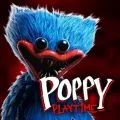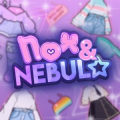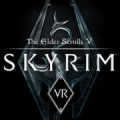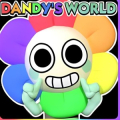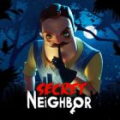The gameplay offers a rich interactive experience where your survival relies primarily on your wit. You'll be equipped with a multi-purpose tool known as the ‘Grabpack’, allowing you to manipulate distant objects like a true horror protagonist. By interacting with this enigmatic environment, you must uncover the bleak history that led to the factory's shutdown and survive the sinister forces at play.
Besides its engaging gameplay and stunning visuals, Poppy Playtime is also voice acted brilliantly, with each line contributing to its chilling ambient atmosphere. However, the game does have a significant shortcoming – its length. As currently available, Poppy Playtime only includes Chapter One: 'A Tight Squeeze,' which can easily be completed within an hour. It leaves a lot to be explored and anticipated for future chapters. Despite this shortcoming, its potent blend of puzzles and scares makes it a must-play, especially for horror enthusiasts.
Shivers, Fears, and Collectible Tears
Much like any immersive game with an enveloping narrative, Poppy Playtime leaves its players with a blend of emotions - stirring a cocktail of fear, exhilaration, anxiety, and suspense. Users are raving about the game's ambient horror aura, the intriguing story, and the haunting audiovisuals that perfectly encapsulate the chill and thrill the genre promises.
The game is particularly applauded for its monster – Huggy Wuggy. Players testify to the adrenaline rush they feel upon hearing the eerie jingles and seeing the grotesque appearance of the towering blue creature. Debates and discussions around the past, present, and speculated future of this monster flood online platforms, driving players deeper into the world of Poppy Playtime.
The Unique Outlier Among Indie Horror Games
Poppy Playtime stands out among its peers due to several distinct characteristics. The first is its unique setting, a spooky toy factory named Playtime Co, which differs greatly from the usual haunted hospitals or dilapidated houses seen in many horror games. The juxtaposition of childhood innocence with underlying darkness creates a disturbing and unique atmosphere that is difficult to shake off.
Another crucial differentiating factor is the way Poppy Playtime leverages innovative gameplay mechanics. While most horror games focus on running or hiding from the enemy, Poppy Playtime equips players with a special tool called the 'Grabpack.' This device allows players to reach remote objects and puzzle out the secrets of the environment, creating a sense of engagement that surpasses the typical 'run or hide' mechanic present in games like Outlast or Amnesia.
Exploring further, the monstrous yet cartoonish antagonist, Huggy Wuggy, is an evolution in horror game design. Whereas other games such as Resident Evil or Dead Space feature very terrorizing, ultra-realistic, and gruesome enemies, Huggy Wuggy is unusually quirky and colorful. This design flouts the tradition of using gore to induce horror, as it manages to create a profound sense of unease and anxiety, partly because its appearance contrasts sharply with its sinister and terrifying nature.
Lastly, the narrative style of Poppy Playtime provides an edge over other horror games. The story unravels not through cutscenes or pages of exposition but through interaction with the environment and drawing from subtle hints scattered around the factory. This style has been used successfully in games like the viral hit Five Nights at Freddy's (FNAF), creating an air of mystery that keeps players on edge and encourages exploration.
In conclusion, Poppy Playtime can be unequivocally claimed as a shining example of indie horror gaming. It immerses players into its narrative while providing invigorating diversions and suspenseful encounters. However, its allure lies in more than its masterful design. The game's ability to delve into the human psyche, projecting both fear and curiosity, is the aspect that truly sets it apart.
![Geometry Dash Logo]() Geometry Dash
Geometry Dash ![My Talking Tom Logo]() My Talking Tom
My Talking Tom ![Gacha Nebula Logo]() Gacha Nebula
Gacha Nebula ![Wicked: For Good Logo]() Wicked: For Good
Wicked: For Good ![Red Ball 4 Logo]() Red Ball 4
Red Ball 4 ![Lords of the Realm II Logo]() Lords of the Realm II
Lords of the Realm II ![The Elder Scrolls V: Skyrim VR Logo]() The Elder Scrolls V: Skyrim VR
The Elder Scrolls V: Skyrim VR ![Titan Quest: Atlantis Logo]() Titan Quest: Atlantis
Titan Quest: Atlantis ![Motor Depot Logo]() Motor Depot
Motor Depot ![Among Us Logo]() Among Us
Among Us ![Superman 2025 Logo]() Superman 2025
Superman 2025 ![How to Train Your Dragon (2025) Logo]() How to Train Your Dragon (2025)
How to Train Your Dragon (2025) ![Home Alone Logo]() Home Alone
Home Alone ![Dandy's World Logo]() Dandy's World
Dandy's World ![Hitman: Codename 47 Logo]() Hitman: Codename 47
Hitman: Codename 47 ![Secret Neighbor: Hello Neighbor Multiplayer Logo]() Secret Neighbor: Hello Neighbor Multiplayer
Secret Neighbor: Hello Neighbor Multiplayer 
